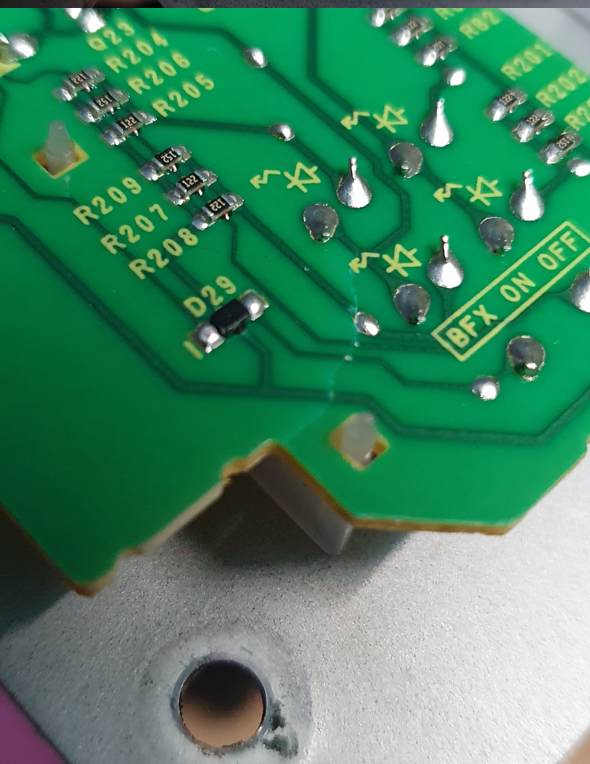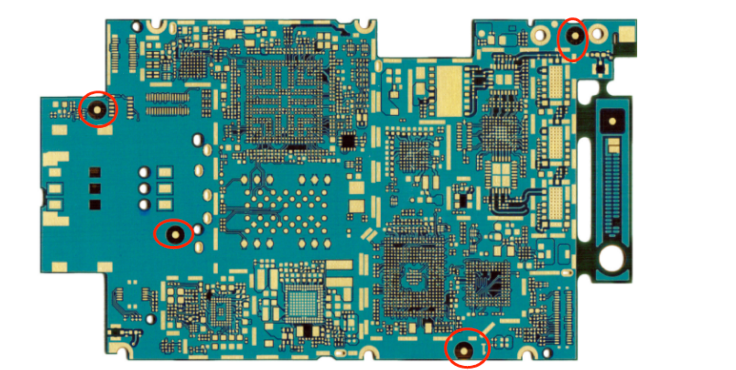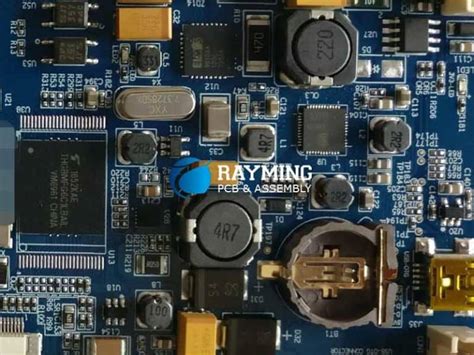Multilayer pcb vias
Understanding The Role Of Vias In Multilayer PCBs
In the realm of modern electronics, multilayer printed circuit boards (PCBs) have become indispensable due to their ability to accommodate complex circuitry within a compact form factor.
A critical component that facilitates the functionality of these multilayer PCBs is the via.
Understanding the role of vias in multilayer PCBs is essential for anyone involved in the design and manufacturing of electronic devices. Vias are small conductive pathways that allow electrical connections between different layers of a PCB. They are essentially holes drilled through the board, which are then plated with conductive material, typically copper, to establish electrical continuity. The primary function of vias is to enable the interconnection of various layers, thereby allowing for more complex and dense circuit designs.
There are several types of vias used in multilayer PCBs, each serving a specific purpose.
The most common type is the through-hole via, which extends from the top layer to the bottom layer of the PCB. Through-hole vias are relatively easy to manufacture and are widely used in many applications. However, as the demand for more compact and efficient designs increases, other types of vias have gained prominence. Blind vias, for instance, connect an outer layer to one or more inner layers but do not extend through the entire board. This type of via is particularly useful in high-density designs where space is at a premium. Similarly, buried vias connect only internal layers and are not visible from the outer layers, further optimizing space and allowing for more intricate designs.
The choice of via type is influenced by several factors, including the complexity of the circuit, the number of layers, and the specific requirements of the application.
For instance, in high-frequency applications, the parasitic inductance and capacitance associated with vias can significantly impact performance. Therefore, careful consideration must be given to the size, shape, and placement of vias to minimize these effects. Additionally, the thermal management of a PCB can be enhanced through the strategic use of vias. Thermal vias, which are typically larger and more numerous, help dissipate heat by providing a conductive path for heat to travel from hot components to cooler areas of the board or to a heat sink.
Moreover, the manufacturing process of vias is a critical aspect that affects the overall reliability and performance of the PCB.
The drilling process, whether mechanical or laser-based, must be precise to ensure that vias are correctly aligned and sized. Following drilling, the plating process must ensure a uniform and robust conductive layer to prevent issues such as voids or weak connections, which can lead to circuit failure. As technology advances, the development of microvias, which are significantly smaller than traditional vias, has allowed for even greater miniaturization and performance enhancement in multilayer PCBs.
In conclusion, vias play a pivotal role in the functionality and performance of multilayer PCBs. Their ability to interconnect multiple layers within a compact space is crucial for the development of modern electronic devices. As the demand for more sophisticated and efficient electronics continues to grow, the importance of understanding and optimizing via design and implementation cannot be overstated. By carefully considering the type, placement, and manufacturing of vias, designers can significantly enhance the performance and reliability of multilayer PCBs, paving the way for the next generation of electronic innovations.
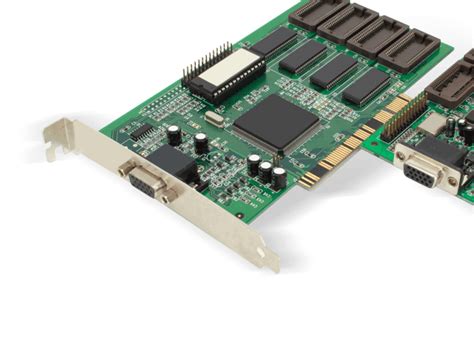
Types Of Vias Used In Multilayer PCB Design
In the realm of multilayer printed circuit board (PCB) design, the use of vias is a critical aspect that significantly influences the functionality and performance of the final product. Vias are essentially conductive pathways that allow electrical connections between different layers of a PCB. As the complexity of electronic devices continues to escalate, understanding the various types of vias used in multilayer PCB design becomes increasingly important for engineers and designers alike.
To begin with, the most common type of via is the through-hole via.
This type of via extends from the top layer to the bottom layer of the PCB, passing through all intermediate layers. Through-hole vias are relatively easy to manufacture and are often used in simpler designs where space is not a primary concern. However, as the demand for more compact and efficient designs grows, the limitations of through-hole vias become apparent. They can occupy valuable real estate on the board and may interfere with the routing of other traces.
In response to these limitations, blind vias have emerged as a popular alternative.
.Unlike through-hole vias, blind vias connect an outer layer of the PCB to one or more inner layers without passing through the entire board. This allows for more efficient use of space, as blind vias do not occupy the entire thickness of the PCB. Consequently, they enable more complex routing and can contribute to a reduction in the overall size of the board. However, it is important to note that the manufacturing process for blind vias is more complex and costly compared to through-hole vias.
Another type of via that addresses the challenges of multilayer PCB design is the buried via.
Buried vias are located entirely within the inner layers of the PCB, making them invisible from the outer layers. This type of via is particularly useful in high-density designs where maximizing the available surface area is crucial. By confining the via to the inner layers, designers can free up space on the outer layers for additional components or routing. Despite their advantages, buried vias also come with increased manufacturing complexity and cost, similar to blind vias.
Furthermore, microvias have gained prominence in recent years due to their ability to support high-density interconnect (HDI) designs.
Microvias are significantly smaller than traditional vias and are typically used to connect adjacent layers. Their small size allows for a higher density of connections, which is essential in modern electronic devices that require compact and efficient designs. The use of microvias can lead to improved electrical performance and signal integrity, making them a preferred choice in advanced applications. However, the precision required in their manufacturing process can lead to higher production costs.
In conclusion, the selection of via types in multilayer PCB design is a critical decision that impacts the overall performance, size, and cost of the final product. Through-hole vias, blind vias, buried vias, and microvias each offer distinct advantages and challenges. As technology continues to advance, the demand for more sophisticated and compact designs will likely drive further innovation in via technology. Understanding the nuances of each via type allows designers to make informed decisions that align with the specific requirements of their projects, ultimately leading to more efficient and effective electronic devices.

Best Practices For Via Placement In Multilayer PCBs
In the realm of multilayer printed circuit boards (PCBs), the strategic placement of vias is a critical factor that significantly influences the overall performance and reliability of the electronic device. Vias, which are small conductive pathways that allow electrical connections between different layers of a PCB, play a pivotal role in the design and functionality of multilayer boards. As the complexity of electronic devices continues to increase, understanding the best practices for via placement becomes essential for engineers and designers aiming to optimize their designs.
To begin with, it is important to recognize the different types of vias commonly used in multilayer PCBs:
through-hole vias, blind vias, and buried vias. Through-hole vias extend from the top to the bottom layer of the PCB, providing a straightforward connection across all layers. Blind vias, on the other hand, connect an outer layer to one or more inner layers without passing through the entire board. Buried vias are located entirely within the inner layers, invisible from the outer surfaces. Each type of via has its own advantages and limitations, and selecting the appropriate type is crucial for effective via placement.
One of the fundamental best practices in via placement is to minimize the number of vias used.
Excessive use of vias can lead to increased parasitic capacitance and inductance, which can degrade signal integrity and lead to potential performance issues. Therefore, designers should aim to use the minimum number of vias necessary to achieve the required connectivity. This can be accomplished by optimizing the routing paths and layer stack-up, ensuring that signals are routed efficiently with minimal layer transitions.
Moreover, the placement of vias should be carefully considered in relation to the signal traces and power planes.
It is advisable to avoid placing vias too close to high-speed signal traces, as this can introduce unwanted crosstalk and signal reflection. Instead, vias should be strategically positioned to maintain signal integrity and minimize electromagnetic interference. Additionally, when placing vias near power planes, it is essential to ensure that they do not disrupt the current flow, which could lead to voltage drops and power integrity issues.
Thermal management is another critical aspect to consider in via placement.
Vias can serve as thermal conduits, helping to dissipate heat from components to the inner layers or heat sinks. Therefore, placing thermal vias near heat-generating components can enhance the thermal performance of the PCB. However, care must be taken to balance thermal management with electrical performance, as excessive thermal vias can impact the electrical characteristics of the board.
Furthermore, the mechanical reliability of the PCB can be influenced by via placement.
Vias should be placed in a manner that avoids creating stress concentration points, which could lead to mechanical failure under thermal cycling or mechanical shock. Distributing vias evenly across the board and avoiding clustering them in one area can help mitigate these risks.
In conclusion, the strategic placement of vias in multilayer PCBs is a multifaceted task that requires careful consideration of electrical, thermal, and mechanical factors. By adhering to best practices such as minimizing via count, optimizing their placement relative to signal traces and power planes, and considering thermal and mechanical implications, designers can enhance the performance and reliability of their multilayer PCB designs. As technology continues to advance, staying informed about the latest developments and techniques in via placement will remain crucial for achieving optimal PCB performance.
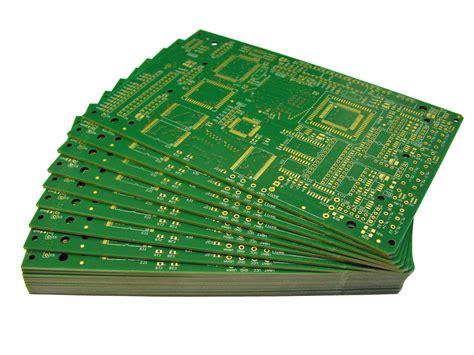
Challenges And Solutions In Via Manufacturing For Multilayer PCBs
In the realm of modern electronics, multilayer printed circuit boards (PCBs) have become indispensable due to their ability to accommodate complex circuitry within a compact form factor. A critical component of these multilayer PCBs is the via, which serves as an electrical connection between different layers of the board. However, the manufacturing of vias in multilayer PCBs presents several challenges that require innovative solutions to ensure reliability and performance.
One of the primary challenges in via manufacturing is the precise drilling required to create these tiny holes.
As the demand for smaller and more densely packed PCBs increases, the size of vias continues to shrink, necessitating advanced drilling techniques. Traditional mechanical drilling methods often fall short due to limitations in precision and the risk of damaging the surrounding material. Consequently, laser drilling has emerged as a preferred solution, offering the precision needed to create microvias with diameters as small as 50 micrometers. This method not only enhances accuracy but also reduces the risk of defects, thereby improving the overall quality of the PCB.
Another significant challenge is the plating process, which involves depositing a conductive material, typically copper, onto the walls of the via to establish electrical connectivity.
Ensuring uniform plating is crucial, as any inconsistencies can lead to increased resistance or even open circuits. To address this, manufacturers have adopted advanced electroplating techniques that allow for better control over the deposition process. Additionally, the use of direct metallization processes, which eliminate the need for a traditional electroless copper layer, has gained traction. This approach not only streamlines the manufacturing process but also enhances the reliability of the vias by reducing the potential for voids and other defects.
Thermal management is another critical aspect of via manufacturing, particularly as electronic devices become more powerful and generate more heat.
Vias play a vital role in dissipating heat from the internal layers of the PCB to the outer layers or heat sinks. However, the thermal conductivity of vias can be compromised by poor design or inadequate material selection. To mitigate this issue, manufacturers are increasingly utilizing materials with higher thermal conductivity, such as copper-filled or silver-filled vias, which offer superior heat dissipation capabilities. Moreover, optimizing the via design, including the size and placement, can significantly enhance thermal performance.
The reliability of vias is also a concern, especially in applications where PCBs are subjected to harsh environmental conditions or mechanical stress.
The expansion and contraction of materials due to temperature fluctuations can lead to via fatigue and eventual failure. To combat this, manufacturers are exploring the use of flexible materials and advanced via structures, such as stacked or staggered vias, which can better accommodate mechanical stresses. Additionally, rigorous testing and quality control measures are implemented to ensure that vias meet the required standards for durability and performance.
In conclusion, while the manufacturing of vias in multilayer PCBs presents several challenges, ongoing advancements in technology and materials offer promising solutions. By adopting innovative drilling techniques, improving plating processes, enhancing thermal management, and ensuring reliability, manufacturers can overcome these challenges and continue to produce high-performance PCBs that meet the demands of modern electronic applications. As the industry evolves, it is imperative for manufacturers to remain at the forefront of these developments to maintain competitiveness and deliver cutting-edge solutions.



